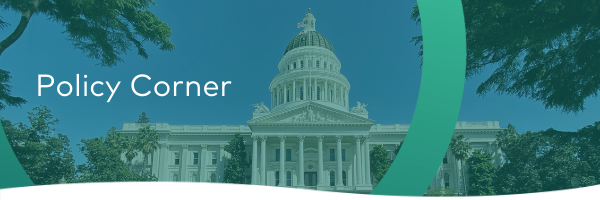August 28, 2025
Topic
Applying Injury Prevention Principles to Road Safety in California
By: Rachel Carpenter, Acting Deputy Secretary for Safety and Enforcement, California State Transportation Agency (CalSTA)
Updated Oct. 20, 2025: California Launches Data-Driven Road Safety Initiative to Save Lives
On October 15, California State Transportation Agency (CalSTA) Secretary Toks Omishakin came together with California Health and Human Services Agency (CalHHS) Secretary Kim Johnson and other state and local leaders to unveil a new statewide initiative to reduce severe traffic crashes in California’s highest-risk areas. The program launched with a new policy on road safety and two designated safety corridors in Los Angeles. Learn more about it here.
California continues to experience high numbers of fatalities and serious injuries on public roads. Between 2013 and 2021, traffic deaths increased by approximately 29%. In 2020, the State adopted the Safe System Approach as a guiding framework which was an important foundation for a more explicit injury prevention lens that better aligns planning, design, operations and evaluation with the goal of reducing severe harm. A California in which everyone can reach their destination free from fatal or serious injury and where transportation systems support social, physical, and mental well-being, can be realized by grounding the Safe System Approach in public health and injury prevention principles.
An injury prevention lens reframes road safety around the physics of harm. Severe outcomes are influenced by three dimensions of kinetic energy; risk including exposure (how often and how far people travel), likelihood (the chance a crash occurs), and severity (the consequences when it does). Directing decisions to systematically lower those three dimensions helps prevent serious injury before it occurs.
This lens does not simply rebrand the frequently cited “E’s” framework of road safety (e.g., education, enforcement, engineering, emergency services and evaluation along with the growing list of additional E’s which may signal limitations of the framework). These elements remain essential. Rather, the shift focuses effort to achieve population level impact. Thisinvolves prioritizing strategies that benefit large numbers of people with minimal individual burden and that reduce exposure, risk and severity of harm. Approaching each as integrated components of a comprehensive system rather than isolated actions.
Equity considerations are integral too. Communities facing persistent poverty often experience higher exposure to risk and slower access to improvements. Strategies such as context appropriate speed management, reliable transit access, connected walking and bicycling networks and land use decisions that shorten or avoid high risk trips act on system conditions. By reducing risk broadly, these measures can also narrow disparities in who bears the brunt of severe crashes.
For those of us working across transportation in California (including state, regional, local, and community organizations) the practical implications are straightforward: set and manage speeds to human tolerant levels; create complete, connected and protected networks for walking, biking, and transit; reduce unnecessary vehicle miles traveled through access and land use strategies; and design intersections and corridors to lower conflict points. Track performance using exposure, likelihood, and severity so investments concentrate where they reduce serious harm most effectively.
What changes with an injury prevention orientation is emphasis and consistency. Rather than primarily responding to individual behaviors, agencies align day-to-day decisions to manage kinetic energy risk at the population level and emphasizing upstream actions. The long-term indicator of success continues to be reductions in deaths and serious injuries.
In summary, an injury prevention approach provides shared criteria and measurable steps for progress. It offers a clear pathway for California’s transportation community to organize existing programs, refine investments and achieve more consistent reductions in fatal and serious injury crashes.
CalSTA is exploring ways to promote this injury prevention lens across the State’s transportation programs and policies. Follow the agency’s social media and website to say up to date on ways CalSTA develops and coordinates transportation policies and programs in the largest and most complex transportation system in the nation.
CalSTA on Facebook
CalSTA on X
CalSTA on Instagram
Keeping the Momentum for Wildfire Preparedness
Increased funding, insurance solutions, and forward thinking have reached a critical impasse
By: Steve Hansen, Fmr. Sacramento City Councilmember
As California’s cooler summer winds down, concern remains over a dry climate that fuels year-round wildfire risk. Earlier fires in Los Angeles underscored that megafires are no longer seasonal but constant threats.
In Sacramento, lawmakers are returning from recess with wildfire preparedness high on the agenda. Over recent months, Governor Newsom and the Legislature have significantly increased funding for Cal Fire, signaling the political will to confront fires head-on. Yet, rising homeowner insurance premiums remain a pressing challenge. The California FAIR Plan, intended as a backstop, is stretched far beyond its original purpose. Sustaining a workable insurance market—so families can stay in their homes without being underinsured—is essential.
Discussions on insurance reform often devolve into blame, but solutions will require cooperation among policymakers, insurers, financial institutions, communities, and homeowners. Stabilizing premiums is critical to maintaining affordability.
Beyond budgets and policy debates, technology and public-private partnerships are advancing the response. AI tools and autonomous machines promise faster firefighting. Research shows cutting response times by just 15 minutes could save up to $8.2 billion annually. Cal Fire is adding C-130 aircraft and Firehawk helicopters with night-vision for round-the-clock operations, while startups like Rain are testing autonomous aircraft for rapid, precise suppression.
Private industry is also stepping in. The U.S. Forest Service recently committed $75 million with landowners to build 400 miles of shaded fuel breaks, slowing wildfire spread and improving firefighter safety while maintaining ecological balance.
One new organization, Megafire Action, aims to end the wildfire crisis within a decade by uniting fire practitioners, policymakers, entrepreneurs, and activists. This type of forward-thinking leadership is essential as climate change forces us to rethink how we prepare for and prevent catastrophic wildfires.
If you are interested in learning more about about wildfire resilience you can check out our “Climate Disaster Resilience and Recovery” webinar, and to learn more about preparing for future climate investments take a look at our article “Beyond the Boom: Why California Must Prepare for Future Climate Funding—Even as Federal Dollars Dry Up” which has insights from Philanthropy California and the Nonprofit Finance Fund.

California Legislature Update –Local Government Impacts
Provided by Our Partners at Lighthouse Public Affairs
The Legislature returned August 18 for its final month of the 2025 session, all remaining bills must pass by September 12. The Governor then has 30 days to sign or veto measures.
Budget & Housing Agency Reorganization
This year’s ~$323 billion state budget established the new California Housing and Homelessness Agency (CHHA), a cabinet-level department that will centralize housing production, homelessness, and housing finance. The change aims to streamline coordination but will require new protocols beginning July 2026. Local governments should monitor early rulemaking to ensure community priorities are reflected.
CEQA Reform & Housing Acceleration
As part of budget negotiations, lawmakers approved AB 130 and SB 131, enacting major CEQA exemptions for infill housing, farmworker housing, childcare centers, wildfire prevention, food banks, and advanced manufacturing. These reforms could shorten approval timelines for local projects while shifting some environmental review responsibilities to the local level. Cities may need to adjust permitting processes quickly to access new funding and take advantage of streamlined deadlines.
Renewable Energy & Climate Resilience
Federal cuts to the “Solar for All” program threaten $250 million in community solar resources for California. Local leaders may wish to explore alternative financing options or advocate for expedited state action to safeguard projects. In addition, the California Supreme Court recently remanded a rooftop solar rate case, leaving uncertainty for homeowners and equity programs.
Next Steps
With only weeks left in session, local governments have a short window to engage state policymakers, shape implementation details, and secure resources. Aligning local initiatives with these emerging state frameworks will be key to advancing climate, housing, and livability goals.

Save the Dates!

CivicWell’s fall webinar series returns in 2025 with hot topics on policies and funding that provide local leaders and practitioners with valuable tools for creating and rebuilding sustainable communities.





